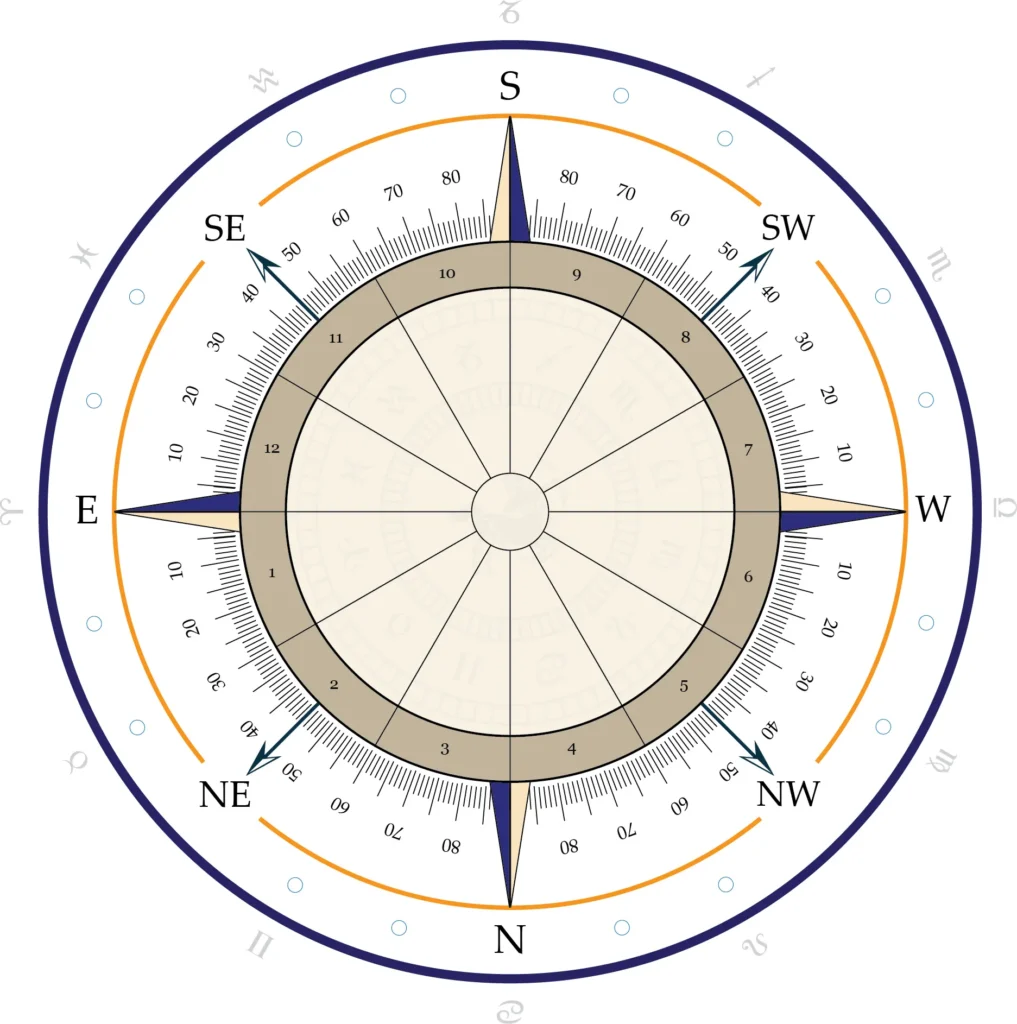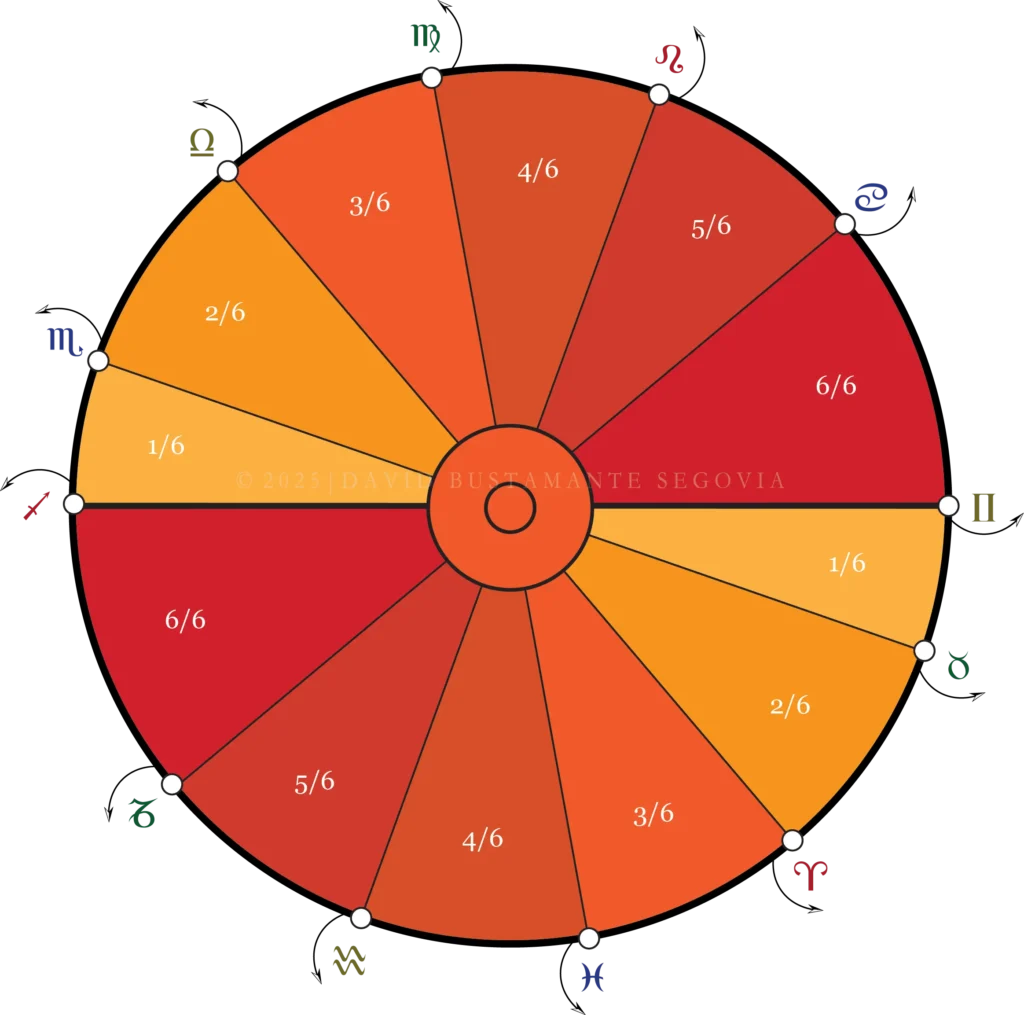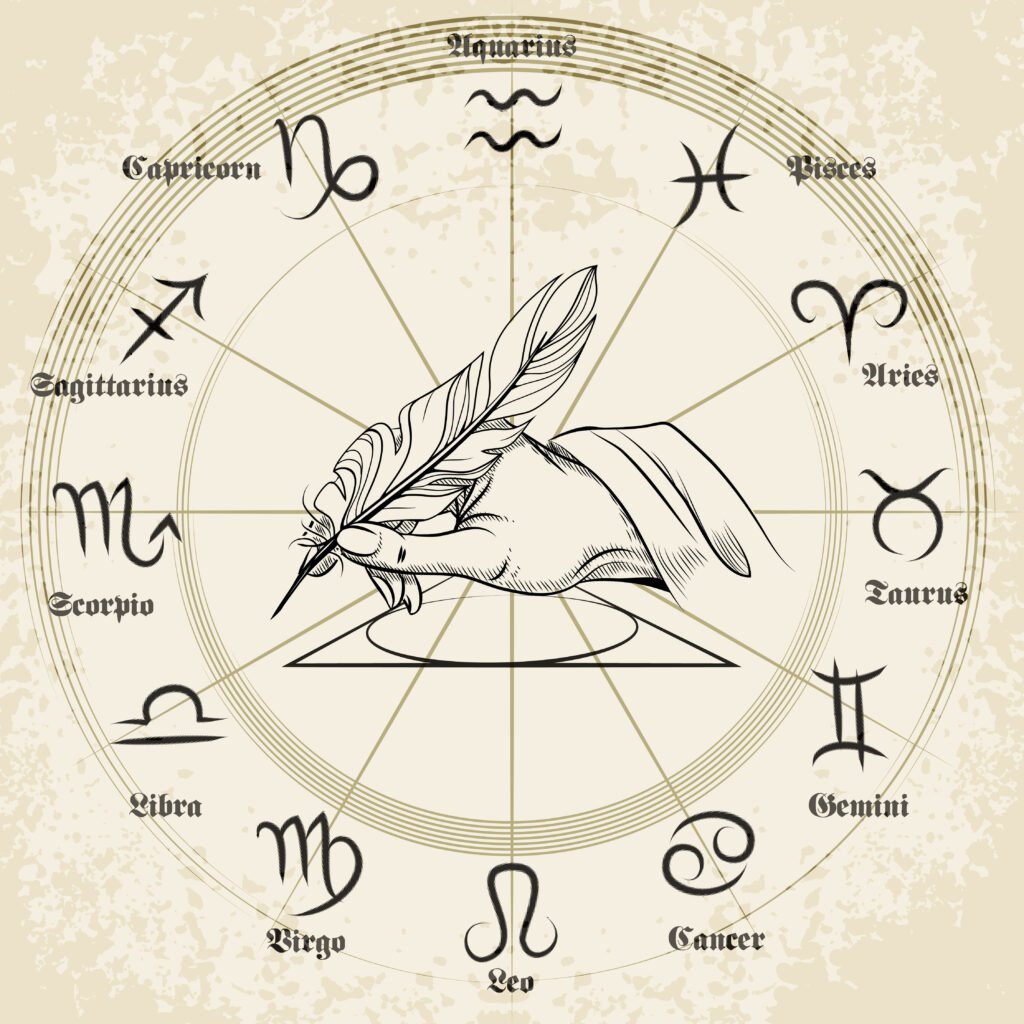
Anthony Louis: “[…] rulers of signs contained within a House also serve as rulers of that House”
In an article published on March 24, 2023 (Morin’s Use of “Secondary Houses), American astrologer and writer Anthony Louis maintained: “[…] the planets that rule parts of the signs contained within a House also serve as rulers of that House.” That is, for example, 15º Aries on the cusp of House 2 and 15º or more of Taurus contained in the same region. In this case, Venus exercises influence over said region (2nd) together with Mars (see Morin, p. 107, Book 18, AFA), wherever both may be (see Morin, p. 92, Book 21, AFA).
What would seem to be a matter of plain and simple common sense based on an astronomical reality, currently is not, especially due to the use and abuse of what we today have come to regard as “whole signs”, not as a model chart (as the overwhelming majority of ancient horoscopes corresponding to the Alexandrian period reflects), but as a House system.
Louis maintained the above based on the principles of astrological delineation described by Morin de Villefranche in the seventeenth century, specifically in Books XVII, XVIII, XIX and XXI of his Astrologia Gallica (1661), Morin’s famous work. Morin is regarded as the most influential astrologer with regard to the methodology of astrological delineation, a rationalist logician who expounded the postulates and theorems, axioms and definitions of astrological praxis with rigor and mastery.
This is the reason why “whole signs” (as a House system instead of as a simplified chart model) does not recognize what in a theoretical paper for the Spanish Society of Astrology (SPICA Magazine) we have called “heterogeneous houses.” That is, using the ecliptic as the only astrographic plane is not compatible with the Earthling or genetic diversity because it violates the two dimensions of the human experience on Earth: the spiritual (ecliptic/Zodiac) and the material (Earth), without mentioning that said chart model explicitly or otherwise unequivocally violates principles of delineation amply consecrated by Morin and his Arab predecessors: the need to value not only the significator of the House (sign looming over its cusp) but also that which rules or governs the second sign resting over the same House (see Morin, p. 91, Book 21, AFA) and that often serves as the cusp-sign of the subsequent House (when birth is produced on or near the equator).
Thus, a planet occupying the second sign of a House spills its effects both into the House it occupies and into the House that follows (see Morin, p. 107, Book 18, AFA). Should we use Whole Signs instead, however, as a House system, that is, said planet would exert influence on the subsequent House only, never on the preceding one (see Morin, p. 105, 111. Book 18, AFA) jointly or together with its significator, wherever it may be placed, which would undoubtedly enrich the description of the House in question (heterogeneity, or “mixture”, according to Morin, p. 91, Book 21, AFA, trans. Baldwin). The homogeneity of a house is produced under Whole Signs only and informs, clearly and insistently, against reality. Whereas the same chart or astrography remains the same for no more than four to ten minutes according to a quadrant House system such as Placidus or Polich-Page (topocentric), which is compatible with human diversity, the same chart will remain the same for approximately two hours according to WSH, which constitutes an abuse of them and a falsification of reality. In short, a notion and an exercise contrary to both experience and reason simultaneously.
Here is the paragraph wherein Louis maintains the quote that characterizes the title of this commentary:
“In this system [quadrant houses], the rulers of parts of signs contained within a house also serve as rulers of that house. […] in Book 18 of Astrologia Gallica, Morin gives examples in which the zodiac signs contained within a primary Regiomontanus house could also be “accidentally” determined toward a different house according to their ordinal numerical relationship with the sign ascending, in a manner similar to the ancient use of whole signs as houses. [In fact,] Morin would never have regarded the formal use of whole signs as houses as a valid system of domification because he viewed the zodiac signs as universal and independent of the Earth, whereas the […] houses were specific divisions of the space around the Earth based on the […] rotation of the Earth on its axis.”
And he adds (see chart below to understand the description):
“In Morin’s delineation of Cardan’s birth chart, he comments that Mars is a ruler of the 12th House. This is true because Aries is intercepted in the 12th [Book 23, p. 26]. [Likewise,] Jupiter is also determined toward 12th House matters because Jupiter rules the 12th cusp and is contained in the 12th. […] Morin also notes that both Mars and Jupiter are rulers of the 7th House [ibidem]. Mars rules the cusp of the […] 7th House, and Jupiter rules Sagittarius, the first 12º of which lie in the 7th House.”

Next, the complete chart, as the previous one constitutes a different visual representation in favour of beginners., The same nativity appears below with the option of viewing the Houses according to proportional sizes without betraying the total number of zodiacal degrees inside each one, as seen on the cusps. That is, each House continues to begin and end with exactly the same ecliptic (zodiacal) degree and minute.

To read Louis’ comment in its entirety, go to:
https://tonylouis.wordpress.com/tag/secondary-houses/








